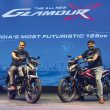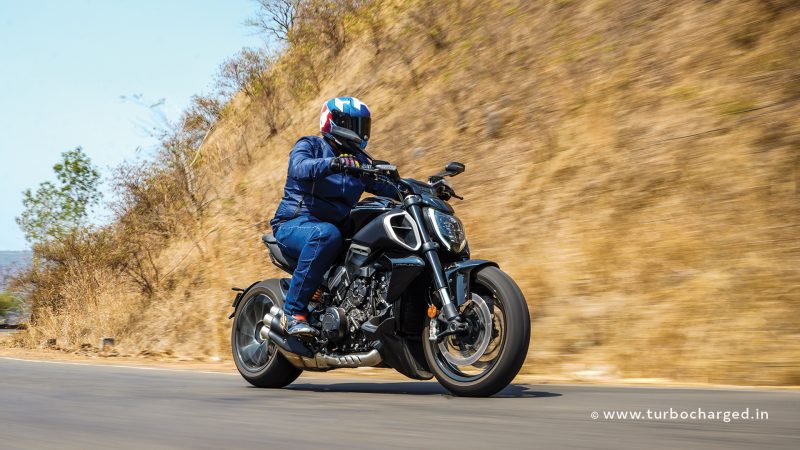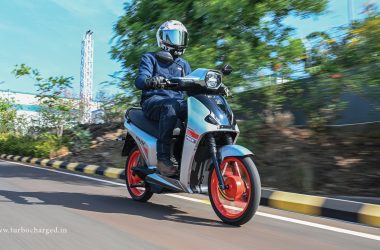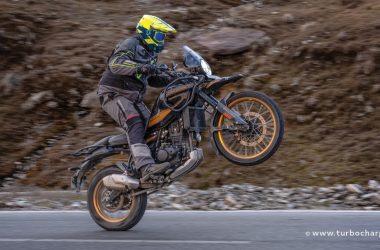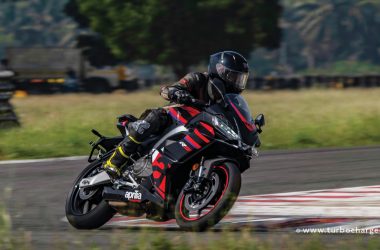In the Ducati multiverse, it’s faired sportsbikes and their naked versions that have ruled the roost traditionally. So when the Italian bike maker launched the Diavel, well over a decade ago, it had enthusiasts scratch their heads in disbelief. It looked like a power cruiser/muscle bike though Ducati didn’t really define its ‘type’, but the Diavel went exactly like a Ducati should! Ducati was aiming to attract a wider audience clearly, while ensuring it doesn’t step away from its roots. And the Diavel may be the newest nameplate from the Bologna-based bike maker, but it has enjoyed immense success, feeling as quick and scarily powerful as a superbike minus the cumbersomeness. The Diavel has also consistently outsold its siblings in a market like ours. But nothing screams excess like the Diavel V4. I mean, if the Panigales and Streetfighters have been go-fast motorcycles on steroids, the Diavel V4 pushes that envelope further. As a motorcycle it is a heady mix of many things and is the Diavel in its most potent form yet. I’d been waiting to swing a leg over, especially since I was enamoured by its predecessor, the Diavel 1260.

First things first, it isn’t just the performance envelope that’s being pushed here. As Ben rightly pointed out, the Diavel V4 even pushes the design envelope. It looks larger, beefier and more menacing, but is identifiable as a Diavel instantly. The lines have gotten softer and the bike looks bulkier than before, but still has that raw appeal we’ve all liked about the Diavel. That said, I feel the Diavel 1260 looked sharper and more aggressive, something I liked a lot. Ducati perhaps wanted the Diavel V4 to appeal to an even wider audience, which explains the more rounded lines for the headlamp and the air intakes flanking it. But yes, there’s no denying the Diavel is still a proper poser and turns heads with its sheer size and distinctive design. A lot of its appeal comes from elements like that ultra-fat 240-section rear tyre, massive rear alloy wheel mounted onto a single-sided swingarm and those unique, quad exhaust tips that sit unlike we’ve seen on any production motorcycle. Heck, that’s not all – take a look at the tail lamps.

If the ignition isn’t on, you’d be searching for a stop lamp. Because it’s integrated into the underside in the form of a set of LEDs that come on in a very distinctive and unique manner. So whenever you spot a Diavel V4 ahead of you, there’s no way on planet Earth you’ll mistake it for anything else given that rear end! The instrument cluster is the same full-colour TFT display as its siblings and has the same interface too, reminding of the Diavel V4’s superbike roots. Hey, this is a Ducati after all, no? The instrument cluster and slightly confusing number of switches at either end of the handlebar let you do a lot. There’s superbike-rivalling electronics here and you get to choose from riding modes like Sport, Touring, Urban and Wet and you can customise everything you want to about them – engine maps, traction control levels, wheelie control levels, ABS and more. This is a top of the line Ducati after all, so you better not question why does a Diavel V4 need multiple wheelie control levels.
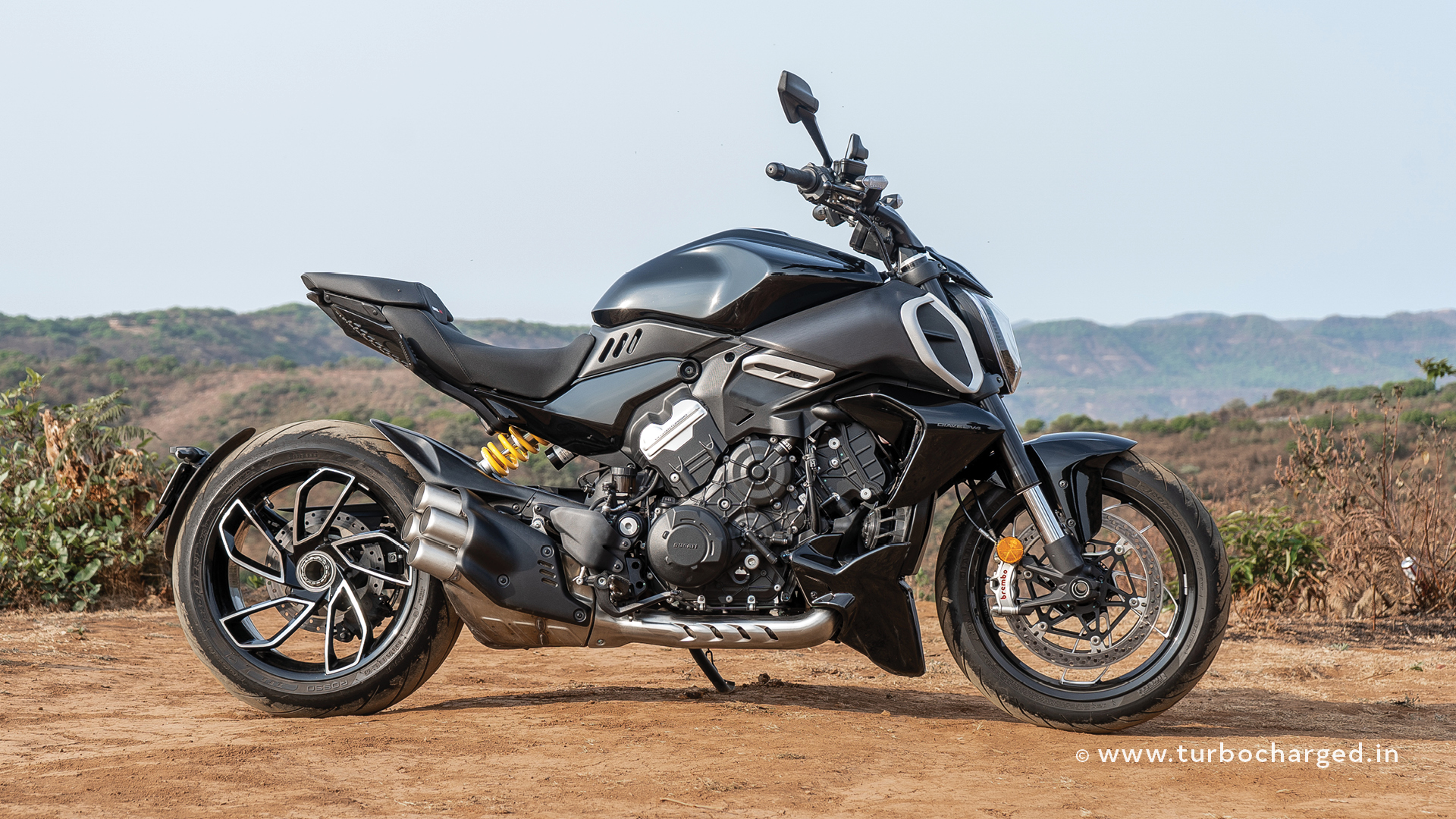
Do not forget, it’s a 170PS motorcycle – 168PS to be precise – that makes its peak torque of 126Nm (higher than most 200PS superbikes!) at a mere 7,500rpm (not a dizzying 13,000rpm like them superbikes). Every electronic aid has been engineered keeping in mind what the bike is capable of, and helps you when you’re trying to ride it hard. The 1,158cc V4 engine is arguably the piece de resistance here and an engineering marvel. It started life on the ferociously quick Panigale V4 a few years ago before taking the form of the ‘V4 Granturismo’ for the Multistrada V4. The motor is in the same state of tune here to say so, but the outputs I mentioned above are stomach churning, especially on a motorcycle that’s not meant for scorching racetracks! It’s sheer madness, because unlike superbikes, the Diavel V4’s midrange punch hits you smack in the face, especially in Sport mode. Before you realise it, you will be doing triple digit speeds because 0-100kmph comes up in just about 3 seconds. 200kmph is easy-peasy. And then you’re out of road.
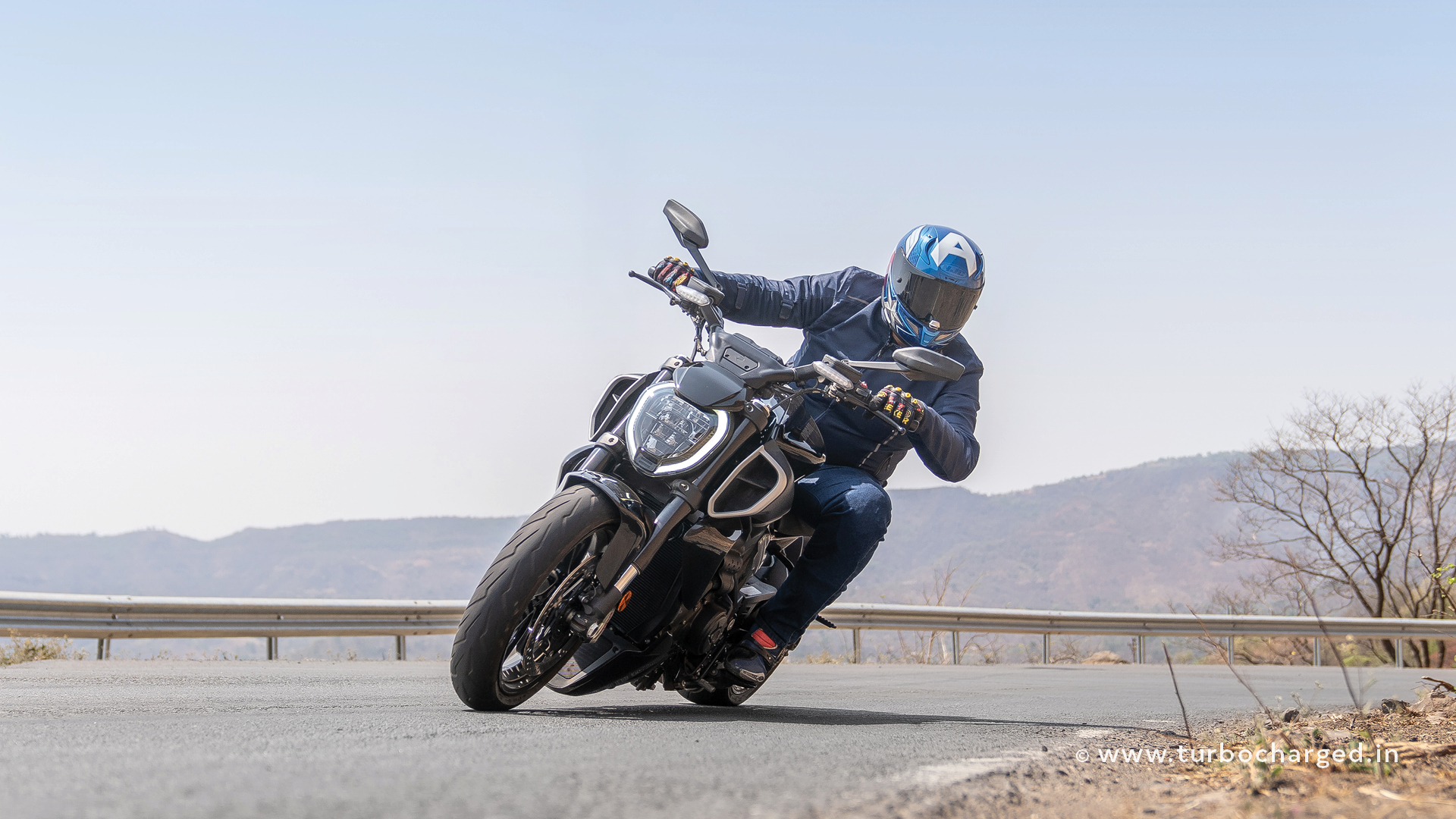
The engine is butter smooth as you would expect, whether you’re pottering at 40kmph in traffic or blasting across a highway at 200kmph. It’s a fantastic mile muncher and you even get a bigger, 20-litre fuel tank now. I rode the bike from Mumbai to Pune and only used a shade less than half a tank of gas, which is reassuring for long distance touring. On the other hand, like other Ducatis, the Diavel V4 also despises traffic, slow speeds and engine revs below the 3,000rpm mark. The engine tends to heat up a fair bit in stop and go traffic and the clutch, which is a hydraulic unit here, gets affected too. But these are aspects you would expect from a high performance, 1,200cc engine with four cylinders. Cylinder deactivation works like a charm – be it at idle or at low riding speeds and in fact besides its own siblings, the Diavel V4 is one of the motorcycles on the planet that gets this technology. And with so much torque, pulling massive wheelies is extremely easy. Provided you’re willing to dial down the electronics and crack the throttle open. Give it the beans and the Diavel V4 is more than willing to rear its head, but the action does call for a lot of caution.

I’ve never been able to wrap my head around Ducati’s wheelie control as it intrudes with my style of power wheelies so I prefer turning it off entirely, and what really helps when pulling those wheelies is the fuelling which is extremely crisp. It makes for precise throttle responses so you know exactly how much power is going to the rear wheel, even with the smallest of throttle openings. Overall, the engine is one of the Diavel V4’s biggest highlights thus and the star of its show, though there certainly is more to this motorcycle. This is a Ducati and it handles like a Ducati should. And that’s despite the V4 trading the 1260’s fancy Ohlins suspension for a new setup from Marzocchi/Sachs. A lot of credit also goes to the new aluminium monocoque chassis, besides the reduced kerb weight. What also helps is the fact that the wheelbase, rake and trail are all lower now, making for sharper steering geometry. The 240-section rear tyre affects agility when changing direction quickly though, especially around chicanes. The Brembo Stylema brakes do a brilliant job and make sure the Diavel V4 slows down quickly, in a progressive manner. On the other hand, the Diavel V4 also impresses with its ride quality as it soaks up undulations rather well. I have to say, after the Multistrada V4 with its semi-active Skyhook suspension, the Diavel V4 is my next favourite Ducati on the ride quality front.
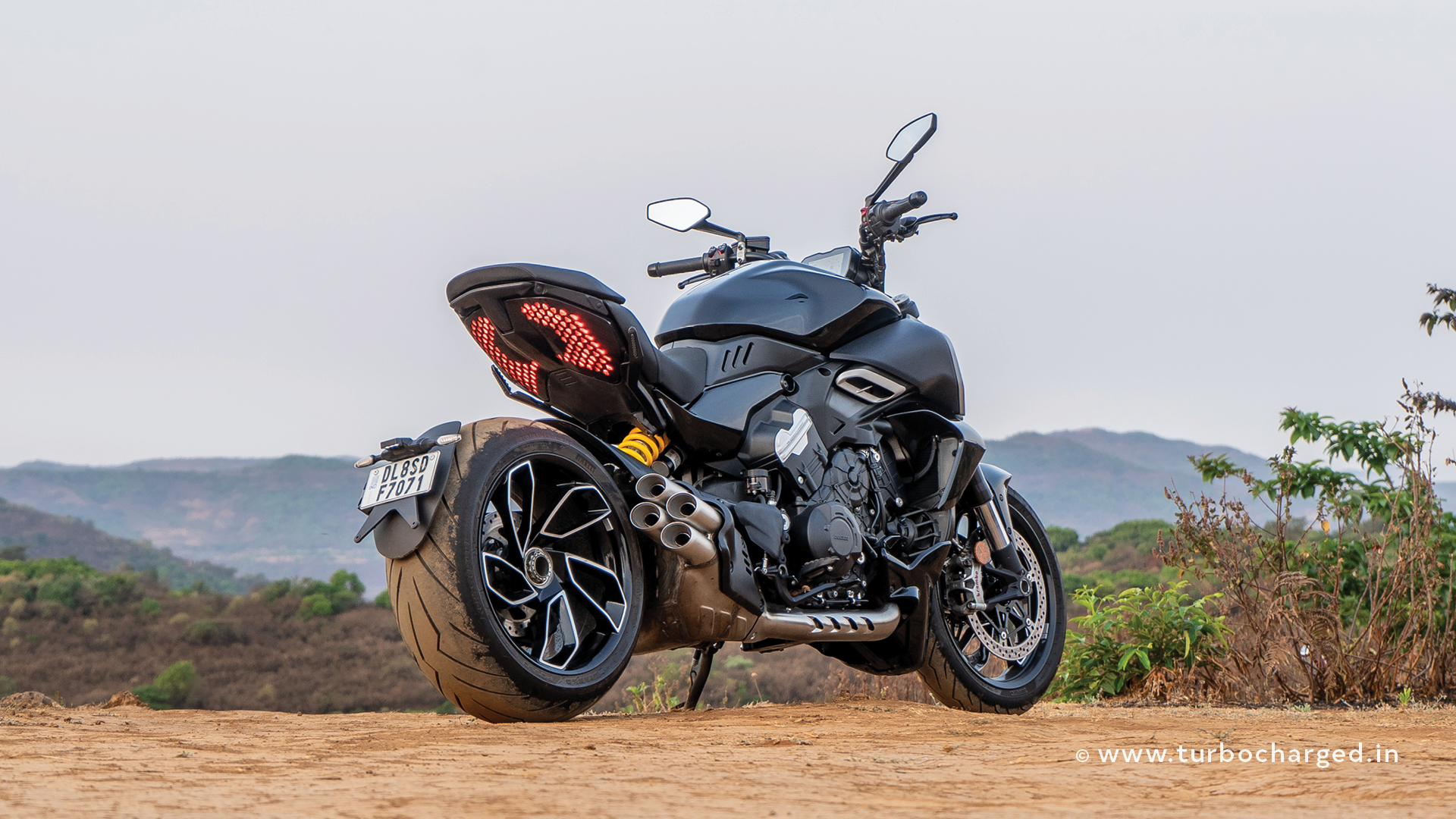
If I were to nit-pick, I would have liked a sharper design but apart from that, there’s nothing to really complain about overall. Because it may not look like it given the bulky design, but the Diavel V4 is a motorcycle that can give many superbikes a run for their money with its performance and handling. And like most other Ducatis, the Diavel has gotten more expensive as the V4 retails at Rs 25 lakh ex-showroom. You could argue that’s a lot of money, but to that, I’d like to tell you, the Diavel V4 will surprise you with not just its poser value, but also its credentials as a Ducati.



